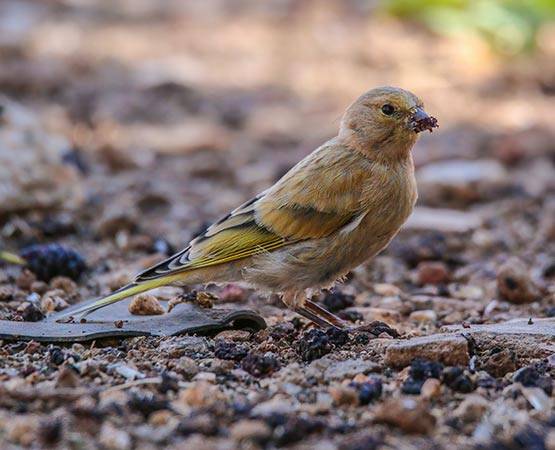Afghanistan – Armenia – Azerbaijan – Bahrain – Cyprus – Egypt – Georgia – Iran – Iraq – Israel – Jordan – Kazakhstan – Kuwait – Kyrgyzstan – Lebanon – Oman – Qatar – Saudi Arabia – South West Russia – Syria – Tajikistan – Türkiye – Turkmenistan – United Arab Emirates – Uzbekistan – Yemen

Capital: Damascus
Area: 185,180 km2
BirdLife International partner: Syrian Society for the Conservation of Wildlife (SSCW)
Total number of bird species: 391
Globally threatened bird species: 19
Country endemics: 0
Important bird and biodiversity areas: 23 IBAs with a total area of 11,435 km2
Rare birds committee: There is currently no rare birds committee in Syria.
Specialities: Greater Flamingo, Northern Bald Ibis, Sociable Lapwing, Syrian Serin.
Ornithological interest:
Syria encompasses a wide variety of habitats; from deserts to wetlands, and mountains to the Mediterranean coast. The country is located at a crossroads between Europe, Asia and Africa and therefore sits on important migration routes. Situated along the Rift Valley/Red Sea Flyway, Syria is notable for the passage of large numbers of soaring birds such as storks, cranes and pelicans as well as raptors including Saker Falcons, Egyptian and Griffon Vultures and Lesser Spotted and Eastern Imperial Eagles on both their spring and autumn migrations along the Mediterranean coast.
Syria also forms part of an important wintering area for a range of birds. Large numbers of waterbirds, including White-headed, Marbled and Ferruginous Ducks, overwinter at wetland locations such as Jabboul (Aleppo), Qatieneh (Homs) and along the Euphrates, Orontes and Yarmouk Valleys.
Iraq Babblers breed in parts of the Euphrates Valley westwards to the Al-Jabboul area while Syrian Woodpeckers occur at the coastal and Anti-Lebanon Mountains and can be located in patches of woodland and orchards. Rollers and Bee-eaters are species worth looking out for during their migration, and during the breeding season, at inland mountains and over some agricultural plains.
Syria is an excellent country to see a number of regional specialists including Syrian Serin at high areas on the Anti-Lebanon Mountains, Sociable Lapwing on its migration routes in the Jazeera area and around the Euphrates, and Greater Flamingo at its wintering and breeding site in the Al-Jabboul area. Unfortunately, Northern Bald Ibis that recently bred around Palmyra are now thought to be locally extinct.
Best times to visit:
Early spring is perhaps the best time of year to visit to see a wide variety of species including a good mix of migrants and breeding birds while the period between August and October is best for autumn migration. Wintering birds (especially waterbirds) can occur in large congregations at a number of wetland sites and a visit between November and February can be highly productive.
Essential reading:
Svensson L, Mullarney K, Zetterström D, Grant P (2010) Collins Bird Guide, HarperCollins, UK.
Porter R & Aspinall S (2010) Birds of the Middle East, Christopher Helm.
(Nature Guides Ltd) دليل الطيور في الشرق الأوسط: تطبيق على نظام أندرويد وآبل
عيسى درويش، أ. وآخرون. 2008 الدليل الحقلي لطيور سورية. إصدار الجمعية السورية لحماية الحياة البرية والمجلس العالمي لحماية الطيور. دمشق، سورية
بورتر، ر.، أسبينال، س.، 2016. طيور الشرق الأوسط. ترجمة عبد الرحمن السرحان وتدقيق لغوي وعلمي: نابغ غزال أسود. إصدار البيردلايف انترناشيونال وجمعية علم الطيور بالشرق الأوسط والقوقاز. عمان، الأردن
The above three references in Arabic are the Arabic smartphone app version of Birds of the Middle East (Porter & Aspinall), a Syrian Bird Guide published in 2008 (BirdLife International and OSME contributed to this) and the Arabic book version of Birds of the Middle East (Porter & Aspinall).
Trip report links:
February-March 1998 – Syria and Jordan
Observations from three trips – 1997, 1998 and 2000
Compiler:
Dr Nabegh Ghazal Asswad
